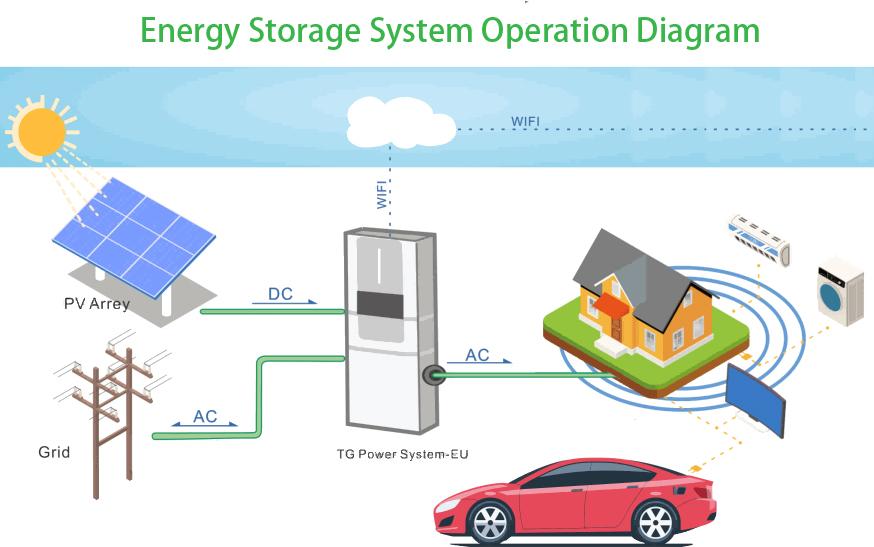
In the evolving landscape of energy solutions, Battery Energy Storage Systems (BESS) have emerged as a crucial technology for enhancing energy efficiency, stability, and sustainability. Whether you’re a homeowner, business owner, or energy professional, understanding the components of a BESS is essential for optimizing performance and making informed decisions. In this article, we will explore the key components of BESS, explaining their roles and importance in energy storage.
1. Batteries
Lithium-Ion Batteries
Lithium-ion batteries are the most popular choice for BESS due to their high energy density, longer life cycle, and efficient performance. They are ideal for applications that require rapid charge and discharge rates.
Lead-Acid Batteries
Though older and less efficient compared to lithium-ion batteries, lead-acid batteries are still used due to their lower initial cost and established technology. They are often employed in less demanding applications.
Flow Batteries
Flow batteries, such as vanadium redox flow batteries, offer advantages for large-scale storage due to their scalability and long cycle life. They are well-suited for applications requiring extended energy storage durations.
2. Battery Management System (BMS)
The Battery Management System is vital for ensuring the optimal performance and longevity of batteries. Key functions include:
State of Charge (SoC) Monitoring: Keeps track of the battery’s current charge level.
State of Health (SoH) Monitoring: Evaluates the overall condition and lifespan of the battery.
Temperature Management: Maintains the battery within safe operating temperatures.
Cell Balancing: Ensures uniform charge distribution across all battery cells.
3. Inverters
Inverters are essential for converting the direct current (DC) produced by batteries into alternating current (AC) used by most household and commercial devices. There are two main types:
String Inverters: Used in smaller systems and connected to battery strings.
Central Inverters: Ideal for larger systems, managing multiple battery strings simultaneously.
4. Charge Controllers
Charge controllers regulate the flow of energy into and out of the batteries. They prevent overcharging and deep discharging, thereby extending battery life. Types of charge controllers include:
PWM (Pulse Width Modulation) Controllers: Cost-effective for smaller setups.
MPPT (Maximum Power Point Tracking) Controllers: More efficient for larger systems with varying input conditions.
5. Thermal Management System
Effective thermal management is crucial for battery performance and safety. Systems include:
Air Cooling: Utilizes fans or vents to disperse heat.
Liquid Cooling: Employs coolant circulation to manage temperature.
Phase Change Materials (PCMs): Absorb and release heat to stabilize temperatures.
6. Enclosures and Racking Systems
Enclosures and racking systems provide physical protection and organization for the BESS components. They:
Protect Against Environmental Factors: Shield components from dust, moisture, and physical damage.
Ensure Safety: Incorporate fire-resistant materials and proper ventilation.
Facilitate Maintenance: Allow for easy access during inspections and repairs.
7. Monitoring and Control Systems
Monitoring and control systems offer real-time oversight and management of the BESS. They include:
SCADA (Supervisory Control and Data Acquisition): Provides comprehensive monitoring for large-scale systems.
HMI (Human-Machine Interface): Offers user-friendly control and interaction with the system.
8. Safety Systems
Safety is a top priority in BESS. Key safety features include:
Fire Suppression Systems: Automatically detect and extinguish fires.
Alarm Systems: Notify operators of faults or hazards.
Emergency Shutoff: Enables rapid system shutdown in emergencies.
Conclusion
Understanding the components of Battery Energy Storage Systems is crucial for maximizing their effectiveness and ensuring reliable energy storage. From the batteries themselves to the sophisticated monitoring and safety systems, each component plays a vital role in the overall performance of the system. Whether you're looking to implement a BESS for commercial or residential use, knowing these components will help you make informed decisions and optimize your energy storage solutions.
